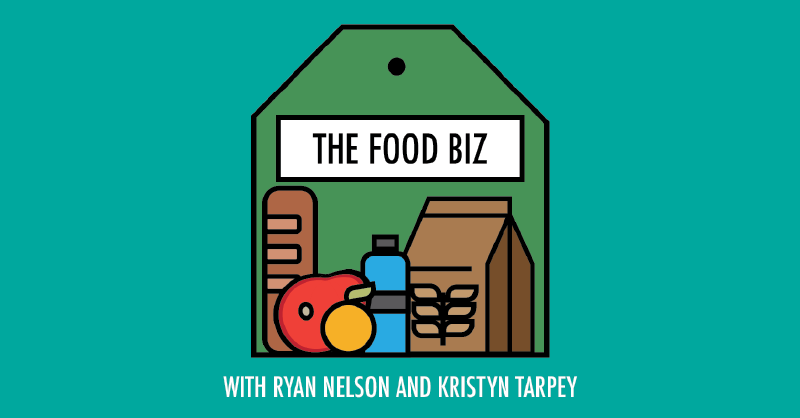Commodity Blog
Nov 22 2021
The Food Biz Episode 16: The Once and Future

On this week’s episode of The Food Biz, hosts Kristyn Tarpey and Ryan Nelson are joined by Barchart’s very own CEO, Mark Haraburda. The three discuss how Barchart has evolved over time, how Barchart entered the food and beverage industry, how different markets all tie together, and much more.
To kick off the episode, Mark dives into Barchart’s history, which really dates back to the beginning of the internet as one of the first websites to bring futures data and commodity data online. First registered as a website in 1995, Barchart.com was a subscription service displaying market data on the web.
People were visiting Barchart.com to view the free data available, and then other firms came to Barchart wanting to display that data on their own website, which sparked the development of Barchart’s B2B solutions which included widgets, modules, and private labels. That business evolved into Barchart being a full-fledged market data and trading software provider, with many different layers. From there, Barchart has expanded from futures and commodities into equities, currencies, and options.
Today, Barchart’s business is broken down into two components, the first being Financial Media. This is mainly driven through Barchart.com, Barchart’s large financial portal visited by 2.4 million users per month. These users come for free access to quotes, unique market analyses such as unusual options activity, leaderboards, or Barchart’s different trading signals. With a Barchart Premier subscription, they can dive even deeper into Barchart.com, access more data and tools, and experience the website ad-free.
Barchart users also have the option to sign up for the newest subscription service, Barchart for Excel, which powers allows users to access the advanced functionality of Barchart.com within Excel. The second component completing Barchart is the solutions business, catering to businesses in the financial and commodity sectors.
Ryan then asked Mark how much traffic came to Barchart.com with the craze of “meme stocks.” Mark explained that first, Covid and the increased market volatility drove traffic immensely at the beginning of 2020. Then Barchart.com saw a further increase at the beginning of 2021 with the meme stocks craze - like GameStop and AMC. That added a ton of traffic on the equity options side. Through these crazes, a lot of people have found Barchart.com and the traffic has stuck.
Kristyn then asks Mark, in terms of the economic issues we’ve seen and market volatility, what the challenges have been in growing Barchart during this time as well as historically. Mark explains that Barchart tends to narrow its focus in terms of industries. Barchart focuses a lot on commodities and even narrower, heavily on the grain markets, but also on retail trading, which is very different. However, there is a lot of overlap, with the common denominator being data. That’s why Barchart continues to invest in its data infrastructure, which is everything from acquiring data, consolidating data, and distributing data.
Mark points out that Barchart could input any data into its system and produce products for diverse audiences through many avenues like Barchart.com, trading software, APIs and data feeds, charting libraries, and so on. Barchart also continuously invests in the grain markets. There are many markets adjacent to grain, like food and beverage or energy, which has made it easier for Barchart to get into.
Ryan then points out that Barchart’s different data partnerships, such as Urner Barry, all really end up tying in together, even though they’re spread across different industries. Factors such as weather, trucking, etc. can all have a widespread impact on the markets, even the stock market.
Mark then emphasized how easy it was to get involved in the food and beverage industry because of Barchart’s involvement with grain. Whether the grain that farmers are producing is for animal feed, human consumption, consumer products that need sweeteners or oils, etc. - many of the companies that need these processed goods are in the food and beverage space, making it a very natural extension for Barchart.
Mark wraps up the conversation by explaining where he sees Barchart headed over the next few years. He said Barchart is focused on producing more written content such as news that you can find on Barchart.com. Whether the content is related to stocks, commodities, investing, or trading, it’s a very important segment to grow, display on Barchart.com, and syndicate to third parties.
Barchart also plans to expand tools around equity options and on the commodity side of the business, Barchart will continue to implement the complete grain ecosystem that it has built. Lastly, Mark sees Barchart further expanding into markets such as energy and metals.
This episode covered a lot of ground, so make sure to listen to the entire episode on Spotify or in the Apple Podcasts App! While you’re there, don’t forget to subscribe. Also, feel free to reach out to us by email at news@barchart.com with any discussion topics, questions, comments, or overall feedback; Ryan and Kristyn would love to hear from you!
Barchart Updates
